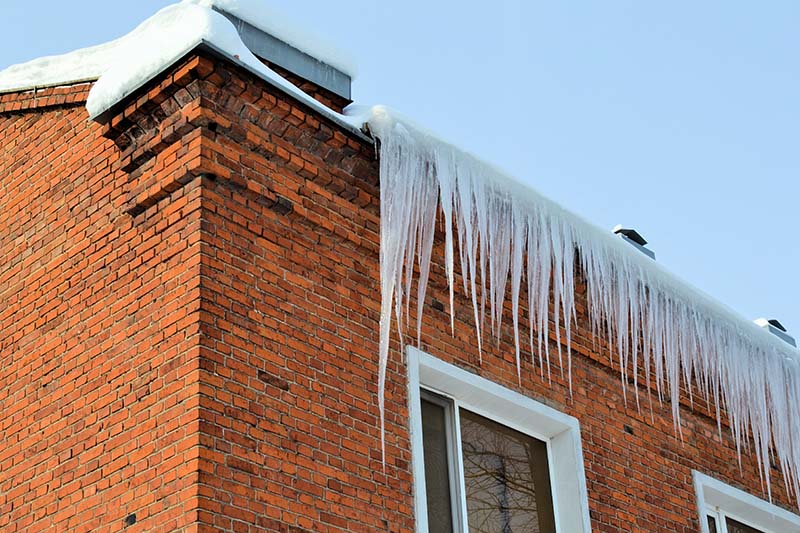Identifying ice dams and attic condensation can help you avoid costly roof leaks and a roof collapse in the future. An ice dam is created by a build-up of ice on the edges of your roof and your gutter drainage system when melted snow freezes down the side. The dam prevents melted water from safely running off the roof through the gutter system. The build-up creates a dam of ice, forming substantial, large ice cycles.
The ice cycles can become rather significant and dangerous. The weight from the built-up ice becomes increasingly heavy over time, damaging the roof and gutter system. Gutters can pull away from the house with the force of the ice and affect the system’s pitch, resulting in improper water drainage. When the water does not drain properly, it damages the roof.
You can prevent ice dams and ice cycles by eliminating these trouble spots.
- Get a roof inspection yearly This will help you stay on top of any issues as they come up. Remember, an ounce of prevention is worth a pound of cure.
- Ventilate Eaves And Ridge. A ridge vent paired with continuous soffit vents circulates cold air under the entire roof. Both ridge and soffit vents should have the same size openings and provide at least 1 square foot of space for every 300 square feet of attic floor. Place baffles at the eaves to maintain a clear path for the airflow from the soffit vents. Air Flow is key to preventing ice damming.
- Check the insulation in your attic. If you see condensation building up or find wet insulation, it will need to be replaced and any leaking spots repaired. In the midwest region of the United States, the U.S. Department of Energy states that the best attic insulation has a rating between R49 and R60. Adding insulation to your attic can help prevent ice build-up on your roof.
- The gap between the chimney and house framing can be a significant source of escaped air. Install steel flashing and fire stop sealant around the area, and you will stop the air from leaking. An Important NOTE: Make sure any products you use around the chimney are fire-resistant.
- Ducts connected to the kitchen, bathroom, and dryer vents should always exhaust the outside through the roof and walls, never through the soffit. If you find a vent that is not constructed correctly, it is best to get that taken care of right away.
- Seal and insulate ducts, vent pipes, and cables with a fire-stop sealant. If you can see the light through space, it should be sealed with adhesive.
- Check for rotted shingles, missing shingles, or soft spots in the roof. If you find any, you will want to replace the shingles and possibly the roof if the damage is spread out on the roof.


